
This textbook is an introduction to Physics at a college level.
- Subject:
- Physical Science
- Physics
- Material Type:
- Textbook
- Provider:
- Kwantlen Polytechnic University
- Author:
- Terrance Berg
- Date Added:
- 07/09/2021

This textbook is an introduction to Physics at a college level.
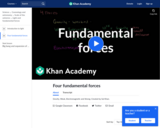
Gravity, Weak, Electromagnetic and Strong

Throwing Francium into water would be "the YouTube video of the century" according to our favourite chemistry professor! But is it possible? This video is one of the 118 clips included in the periodic table of elements themed collection created by Brady Haran and the University of Nottingham in the UK.

Mr. Andersen shows you how to draw free body diagrams of various objects. The major forces (like gravity, normal, tension, friction, air resistance, etc.) are discussed and then applied to various problems.
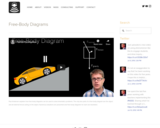
Paul Andersen explains how free-body diagrams can be used to solve kinematics problems. The only two parts of a free-body diagram are the object and all external forces acting on the object. Numerous situations are presented and free-body diagrams for each are illustrated.
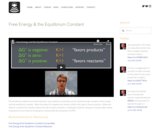
Paul Andersen explains how thermodynamic and equilibrium reasoning can be related through changes in free energy and the equilibrium constant. When the delta G is negative the reaction shifts to the right or favors products. When the delta G is positive the reaction shifts to the left or favors reactants. In biological systems exergonic reactions (like cellular respiration) can be linked to endergonic reactions (like the production of ATP).

Free Radical Reactions
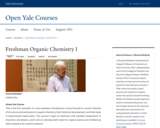
This is the first semester in a two-semester introductory course focused on current theories of structure and mechanism in organic chemistry, their historical development, and their basis in experimental observation. The course is open to freshmen with excellent preparation in chemistry and physics, and it aims to develop both taste for original science and intellectual skills necessary for creative research.
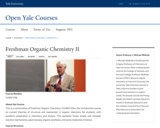
This is a continuation of Freshman Organic Chemistry I (CHEM 125a), the introductory course on current theories of structure and mechanism in organic chemistry for students with excellent preparation in chemistry and physics. This semester treats simple and complex reaction mechanisms, spectroscopy, organic synthesis, and some molecules of nature.
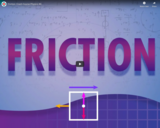
The video resource "Friction: Crash Course Physics #6" is included in the "Sociology" course from the resources series of "Crash Course". Crash Course is a educational video series from John and Hank Green.

Friedel Crafts Acylation
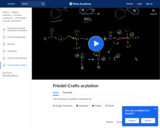
The mechanism of acylation

Friedel Crafts Acylation Addendum
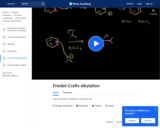
The mechanism of alkylation

Dr Robert Stockman shows us an almost invisible speck which could probably kill a human!

Human-caused climate change represents one of the great environmental challenges of our time. As it is inextricably linked with issues of energy policy, a familiarity with the fundamentals of climate change is critical for those looking to careers in the energy field. To appreciate the societal, environmental, and economic implications of policies governing greenhouse gas emissions, one must understand the basic underlying science. METEO 469 serves to lay down the fundamental scientific principles behind climate change and global warming. A firm grounding in the science is then used as a launching point for exploring issues involving climate change impacts and mitigation.

This video report discusses how Chicago is taking action to mitigate climate change in an urban landscape. The resource, "Chicago Beats Urban Heat YouTube Video" included in "Lesson 12 Urban Heat Island Effect" is a part of "Unit 05 Green Sustainable Facility Design" included in Energy & Sustainability ES - Course 3
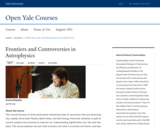
This course focuses on three particularly interesting areas of astronomy that are advancing very rapidly: Extra-Solar Planets, Black Holes, and Dark Energy. Particular attention is paid to current projects that promise to improve our understanding significantly over the next few years. The course explores not just what is known, but what is currently not known, and how astronomers are going about trying to find out.

Students are introduced to the multidisciplinary field of material science. Through a class demo and PowerPoint® presentation, they learn the basic classes of materials (metals, ceramics, polymers, composites) and how they differ from one another, considering concepts such as stress, strain, ductile, brittle, deformation and fracture. Practical examples help students understand how the materials are applied, and further information about specific research illustrates how materials and material science are useful in space exploration. A worksheet and quiz are provided.
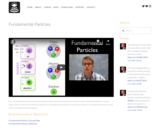
In this video Paul Andersen explains how at the smallest level all matter is made of fundamental particles; including quarks, electron, photons and neutrinos. He explains how understanding the properties of these particles allows us to understand the behavior of the matter. Do you speak another language?